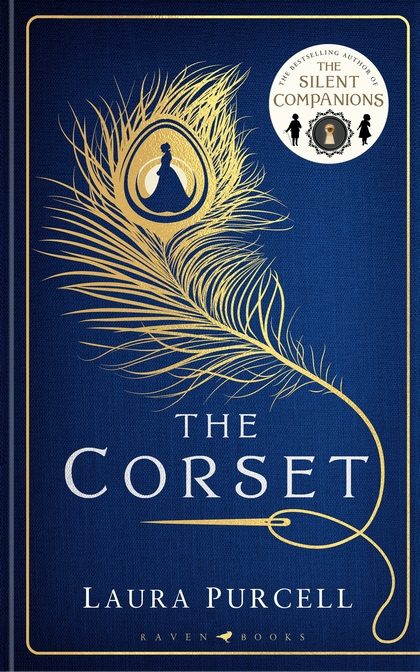
Synopsis:
Is prisoner Ruth Butterham mad or a murderer? Victim or villain?
Dorothea Truelove is young, wealthy and beautiful. Ruth Butterham is young, poor and awaiting trial for murder.
When Dorothea’s charitable work leads her to Oakgate Prison, she finds herself drawn to Ruth, a teenage seamstress – and self-confessed murderess – who nurses a dark and uncanny secret. A secret that is leading her straight to the gallows. As Ruth reveals her disturbing past to Dorothea, the fates of these two women entwine, and with every revelation, a new layer of doubt is cast…
Can Ruth be trusted? Is she mad, or a murderer?
Review:
Hello again dear reader or listener, I hope you’re enjoying nice weather wherever you are. My area in Italy has been very warm and sunny these days. Truly shocking and unexpected, I know. And because, as someone close to me once said, I seem to thrive on being a contrary creature, my mood reading has turned towards gothics, thrillers, and horror books of late.
What I have for you today then, is a Gothic horror by an author who seems to be a queen of it, from what I’ve learned recently. And after reading The Corset (aka The Poison Thread, in the US), I can absolutely see why.
In fact, this novel was dang near perfection, melding together historical fiction and gothic horror into one riveting tale that you can hardly set down for a break. So, before I start waxing on about what made this story brilliant, I’ll get my only peeve out of the way first.
Purcell wove her story between two POVs and timelines, Dorothea’s present where she visits Ruth in the prison, and Ruth’s recounting of the events that led her there awaiting trial. Although I can see why this makes sense for the author and her wish to differentiate these two narrations, part of it made for a bit of jarring experience for me, as for most of the book and a considerable amount of Dorothea’s point of view we get past tense narration, but at random moments in her chapters, the narration lapses into present tense. The fact that it was relatively limited is what allowed me to continue reading as for some reason my brain just doesn’t do present tense, and, ultimately, I’m glad because this was one hell of a story. But if you’re not an oddball like me, I doubt you’ll mind this particular detail.
As for what made it all brilliant? Well, buckle up.
The thing with Gothic fiction is that you never really get all the answers, with doubts and half truths always being more in number, and whatever conclusions you do arrive at, are purely dependent on the author’s whims and you own mind connecting the dots. If they are there to connect in the first place that is heh. Purcell embodies this completely with her novel, to an almost infuriating degree. And I do mean that in the best way possible! Even when you think you have things figured out, the final plot twist upends any certainty you might have. On the very last page. That honestly takes skill, dear reader. Because Purcell does not fall into the trap of throwing in a plot twist from far out in the left field that leaves you baffled as to nothing making sense at all, purely for shock value. We rather get to be lulled into a false sense of security until the final reveal (which with hindsight we definitely saw coming) when we suddenly have too many possible answers. And they could all make perfect sense!
I’m pretty sure I spent three days debating with myself as to every possible resolution, only to be unable to pick the right one. I even ended up rambling to my mom about it all trying to decide, only to realize that I couldn’t because every answer is correct. Or is it?
That, is the beauty of the true Gothic.
Purcell leads us on a bit of a cat and mouse chase throughout the whole novel as to Ruth’s possible guilt and/or abilities. Is there something supernatural going on, or is it all as easily explained as saying “well, 19th century folk were quite possibly high half the time from all the toxic materials they handled in their day to day” so there can always be a reasonable explanation? Ruth’s pov especially, being as unreliable as it is, was my favorite for many a reason. Not the least of which the fact that as a seamstress she was in actual close contact with such toxicity.
(For context and as a neat lil bit of trivia for those who don’t already know: for a time, a specific hue of green known as Scheele’s Green was all the rage and it was used everywhere from wallpaper to clothes, but it derived from arsenic! People kept getting sick because of it but some where even willing to keep using it even after they knew it was toxic. Aaah to be fashionable!)
That, added to Ruth’s very traumatic life, made for endless possibilities. Is this child mad, her psyche broken from one too many horrific events and unhealthy environments, just trying to make sense of it all or does she actually have an ability? You’ll have to read it yourself, dear reader, and let me know what you think!
As for Dorothea, she was another incredibly fascinating and nuanced character, mainly because she is one of the few true to life period characters I’ve read. She may be a bit more free spirited and interested in the sciences (although phrenology is now known as a pseudo-science) than your average 19th century woman, but in everything else she is true to her station as a lady of high society. She is religious and performatively pious as was common, and she does charitable work because it is what was expected of a woman of her standing, so she’s endeavored to enjoy it. But at the same time, she is actually quite haughty and even though she strives for true love and doesn’t care about marrying below her class, she doesn’t want to give up the comforts she enjoys either.
Dorothea is not a malicious character, regardless of what we now would perceive as faults such as having a bit of a savior complex, or belittling her maid for being merely a servant – how dare she give cheek to her mistress?! – or dismissing concerns brought up by reasonable people as fancies because she thinks she knows better as a studied and intuitive woman and so on.
Both protagonists then, are clear results of their environments, and both develop throughout the book in unexpected and nuanced ways that allow the reader to truly understand them and even empathize for situations you wouldn’t expect to be able to.
Purcell’s work is stark, at times brutal, without embellishments that could possibly distract from the ugly realities of 19th century England, or anything to romanticize life then. There is nothing lighthearted or frivolous to make you forget how hard it was if you were not wealthy, and while there’s no sugar coating of the struggles of the upper classes either, this novel is a far cry from any historical fiction that makes you consider even for a moment wanting to live in that time period. And I say this as someone who literally made her uni degree about that century. To me it is endlessly fascinating and yet it was terrific in both the modern and archaic sense of the word.
In short, I am in awe of you, Ms Purcell, this book was absolutely incredible!
If nuanced character work calls to you, you don’t shy away from gothic horror with explicit gore, and you want something that keeps you on the edge of your seat with you breath held tight, dear reader, you’ll devour this cleverly woven book.
As for me, I cannot wait to dig into more of the author’s work!
Until next time,
Eleni A. E.









Leave a Reply